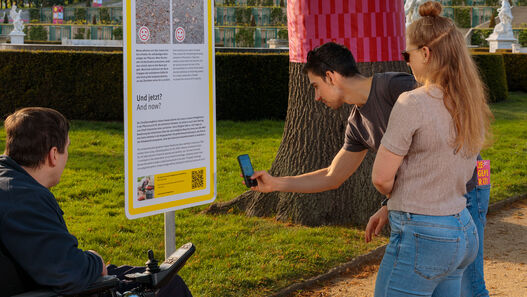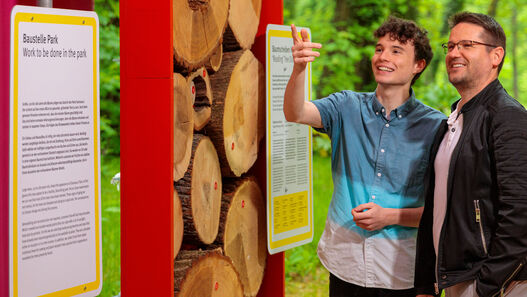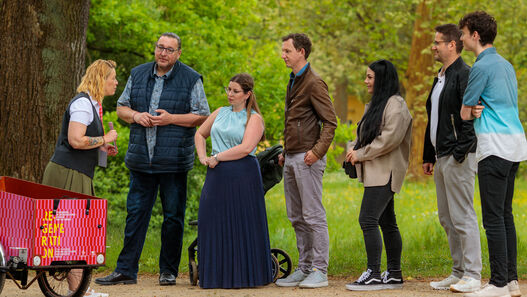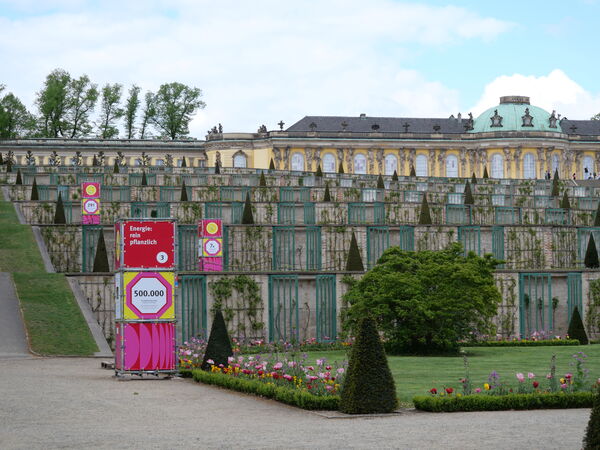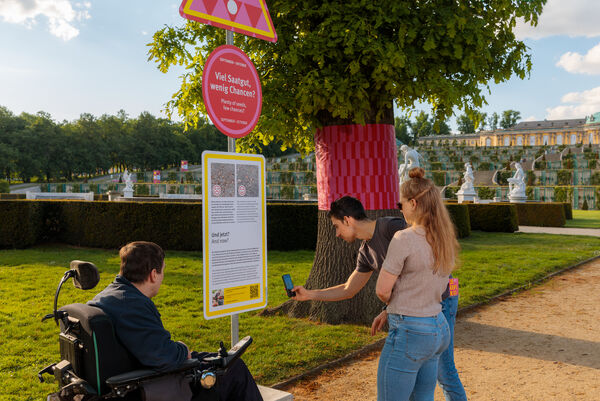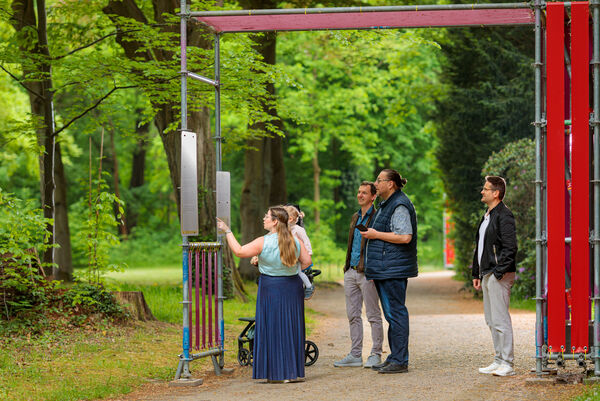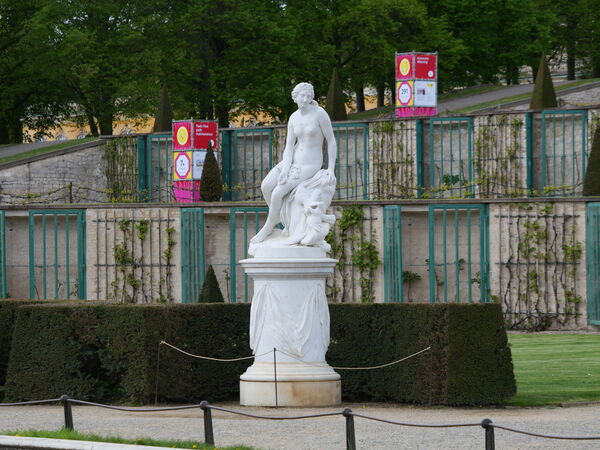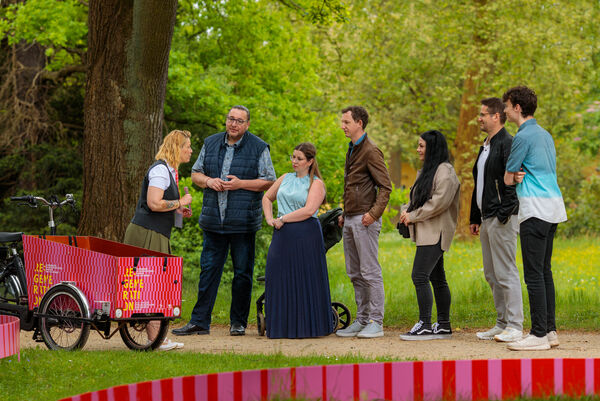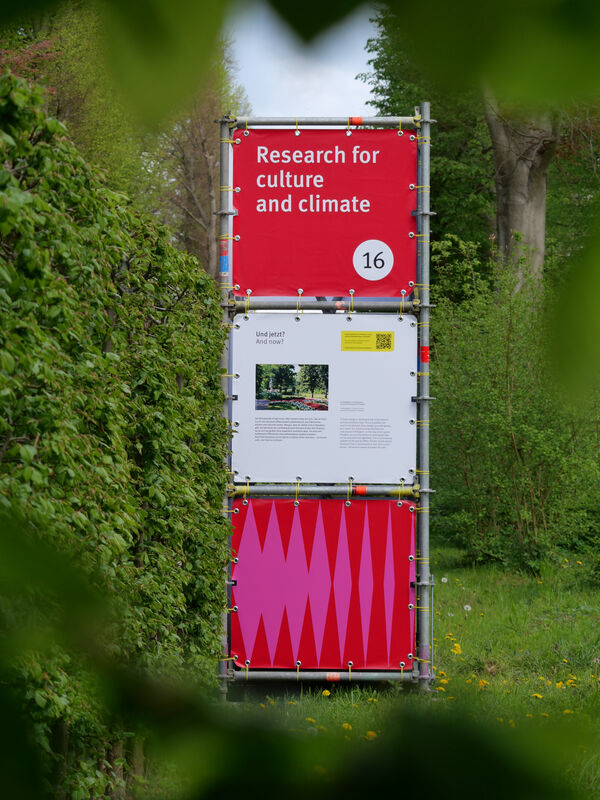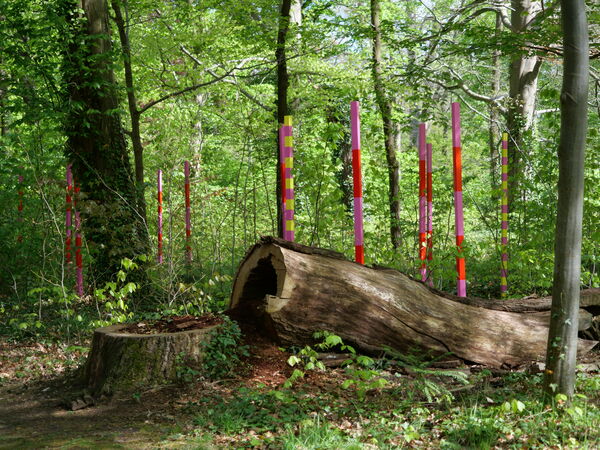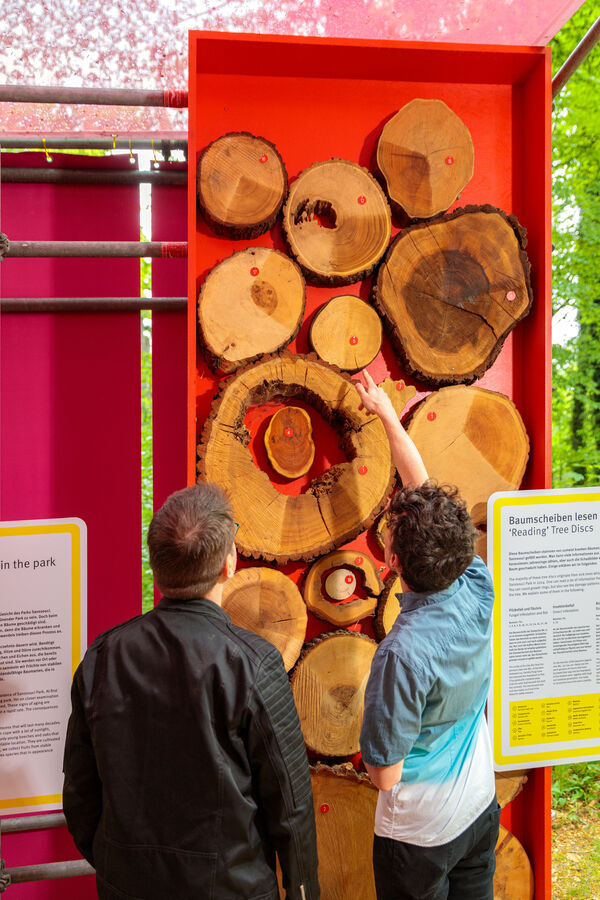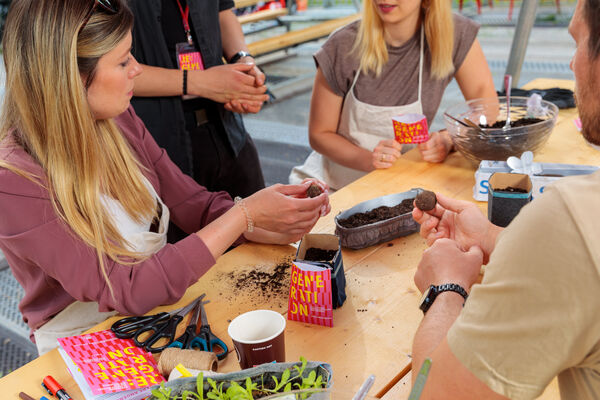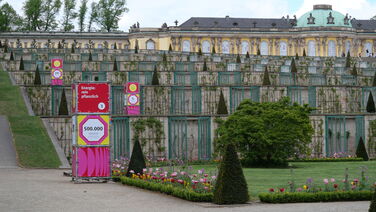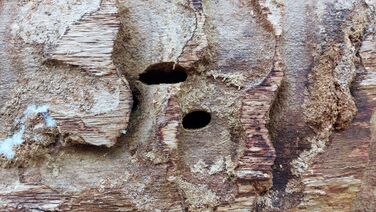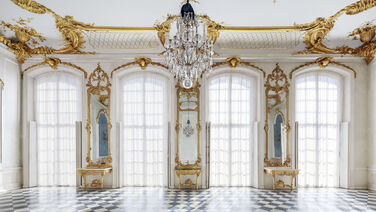Re:GenerationClimate Change in a Natural World Heritage Site - and What We Can Do About It
The human-made climate change concerns Sanssouci Park in Potsdam, too. Due to extreme heat, intense sun exposure and continuous periods of dryness, nearly 80 percent of the trees in the UNESCO World Heritage Site are now damaged. Since 2017, between 160 and 300 of these trees have had to be felled each year.
Gardeners and conservationists at the Prussian Palaces and Gardens Foundation (SPSG) have long been exploring ways in which the trees’ resistance can be strengthened to cope with the effects of climate change. In the open-air exhibition titled ‘Re:Generation. Climate Change in a Natural World Heritage Site - and What We Can Do About It’ taking place at the centre of Sanssouci Park, the SPSG aims to share its findings with visitors and to engage in dialogue with them. Numerous approaches, strategies and examples of progress are presented at 30 exhibition stations. Furthermore, those interested can get tips on how they can stand up for environmental and climate protection on a day-by-day basis.
Near the Western Vineyard Terraces, the focus is on water, while to the north west of the Chinese House, information is provided on the life and death of trees. While problems and challenges will be highlighted, ideas, scientific approaches and pioneering experiments will be presented, too. For example, visitors will become acquainted with a promising new generation of trees in an ‘oak nursery’. They can also experience a variety of alternative and water-saving irrigation methods in action. The Prince Pückler Museum - Branitz Park and Palace Foundation will also be hosting a station and presenting its tree university as part of the "Historic Gardens in a Changing Climate. Perspectives for the Green Cultural Heritage of Sanssouci and Branitz" co-operation.
A range of ideas on how visitors can get involved rounds off the exhibition. Particularly important is the need for us all to campaign together to protect the climate and nature. For, after all, only if we are united in this can we shape a future for the world heritage. We would be delighted to have you on board, too!
Patron: Claudia Roth, Minister of State for Culture and the Media
Accompanying programme
A varied programme of events accompanies the exhibition: school classes are invited to guided tours and workshops, experts hold podium talks and debates, gardeners explain the park using real-life examples. Cooperation partners such as the Fürst Pückler Museum Foundation and the Botanical Garden of the University of Potsdam share their knowledge. And artists from the worlds of theatre, literature and dance present their particular perspective on the subjects of climate change and sustainability. More information on individual events to follow shortly.
Sanssouci Park
Zur Historischen Mühle
14469 Potsdam
Public Transportation
Stop "Potsdam, Schloss Sanssouci", "Potsdam, Neues Palais", "Potsdam, Schloss Charlottenhof", "Potsdam, Luisenplatz-Nord/Park Sanssouci"
vbb-online | Timetable information
Traffic information
Parking
Paid parking spaces for cars and buses in the car park P1 – At the Historic Windmill and P3 – At the New Palace.
- wheelchair access
The SPSG offers a free shuttle service between the Grünes Gitter (Green Grille) and the New Palace on the so-called “Ökonomieweg” in Sanssouci Park from April to October, daily from 11 am to 5.30 pm.
As the shuttle service is only made possible by the voluntary work of the drivers, we ask for your understanding if the service is not always available. Unfortunately, the shuttle service is also not available during heavy rain.
In the ‘Sanssouci’ app, the tour of Sanssouci Park includes added material on the theme of the exhibition. Available from April 27, 2024.
At the ‘Forum’ near the Chinese House, a 'coffee bike' offers coffee specialities, tea, cold drinks and ice cream daily from 11 am to 5 pm. The Coffeebike is closed in bad weather.
To the info page of the venue
On Saturdays and Sundays, visitors can meet ‘climate guides’ in the exhibition between 11 am and 5 pm. They are happy to answer questions and will bring helpful equipment with them such as a magnifying glass or binoculars. From 3 pm to 4 pm, you can take part in hands-on activities in the ‘forum’.
A varied programme of events accompanies the exhibition: school classes are invited to guided tours and workshops, experts hold podium talks and debates, gardeners explain the park using real-life examples. Cooperation partners such as the Fürst Pückler Museum Foundation and the Botanical Garden of the University of Potsdam share their knowledge. And artists from the worlds of theatre, literature and dance present their particular perspective on the subjects of climate change and sustainability. More information on individual events to follow shortly.
The SPSG aims to keep CO2 emissions as low as possible during the creation of the exhibition. For this reason, building site elements were loaned from regional companies for the exhibition architecture. The scaffolding parts and traffic signs will be used again after the exhibition on construction sites and in street traffic. Printed tarpaulins are made from PVC-free material and will likewise be re-used after the end of the exhibition, for example, for creative purposes in training courses held by the SPSG.


